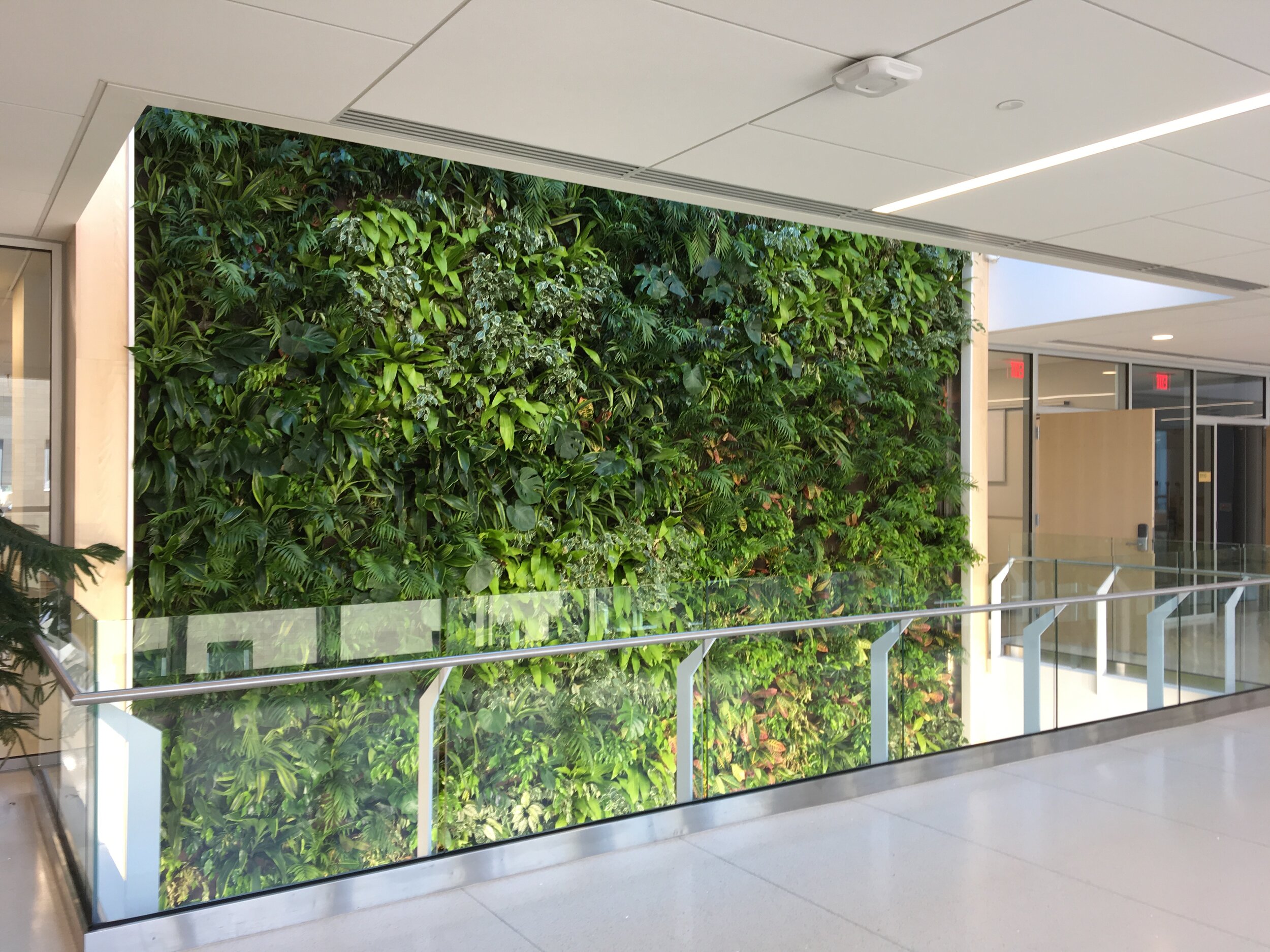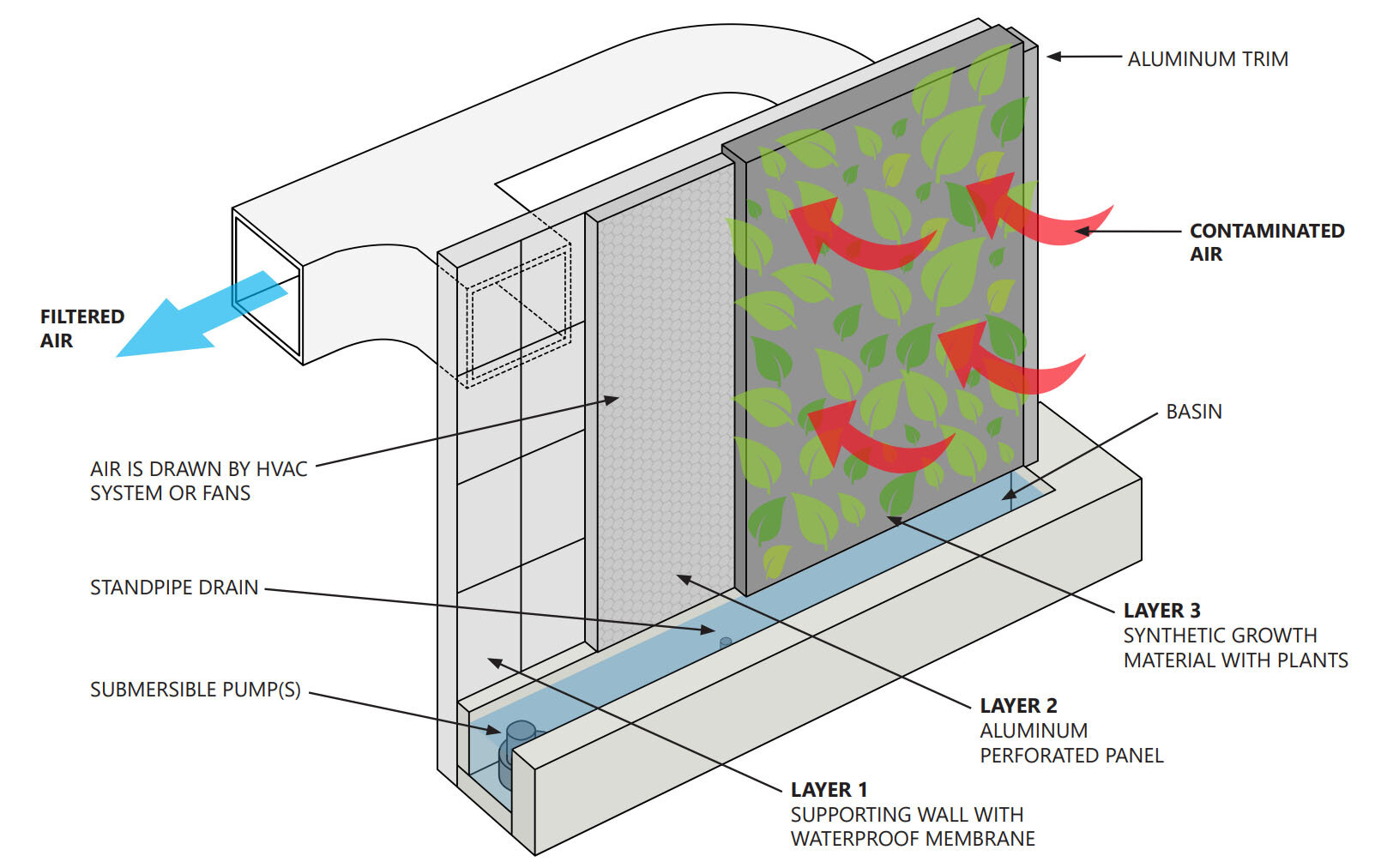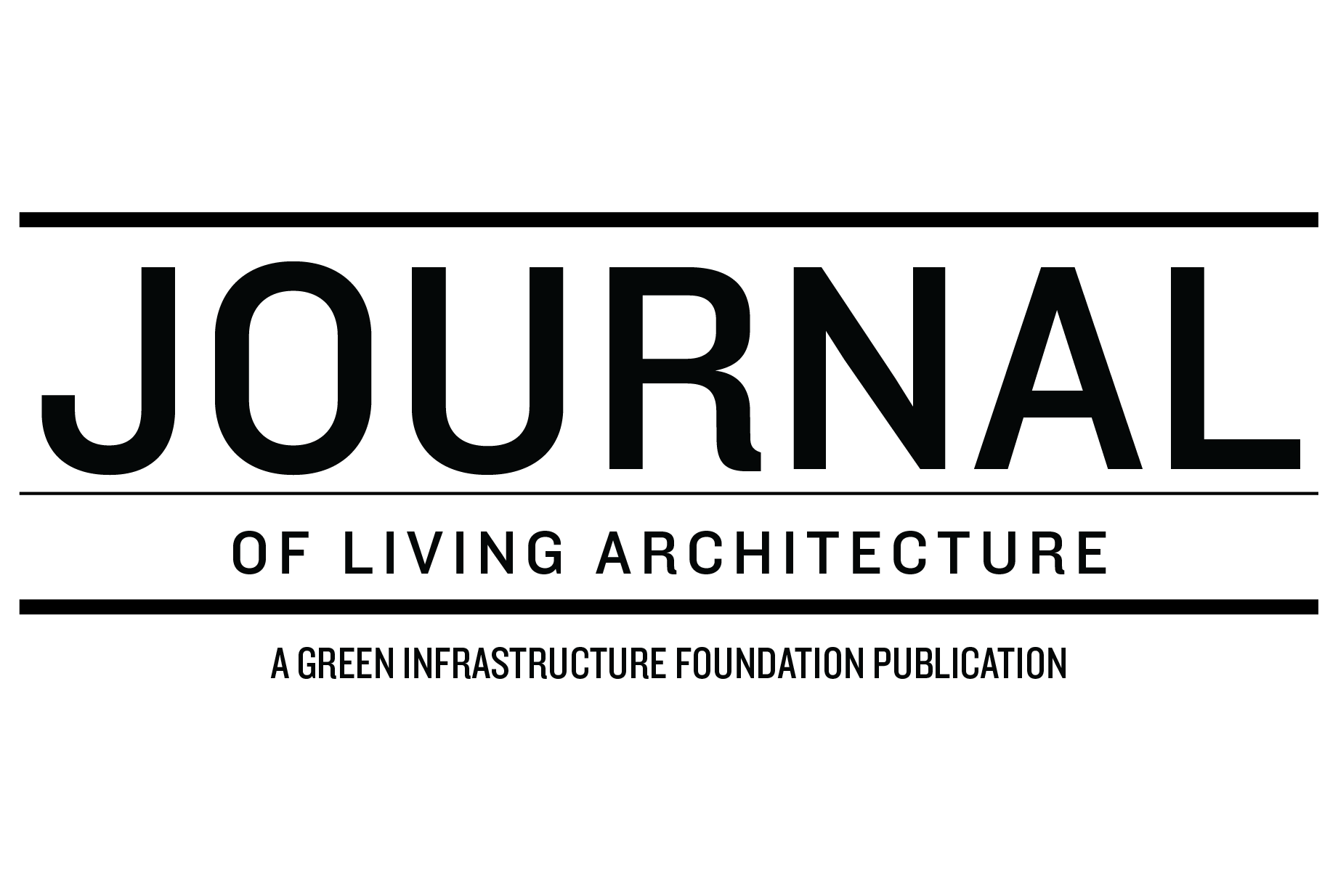Designing for Maximum Energy and Climate Benefits of Green Roofs
Advertisement
This article features materials from the new GRHC report, Green Roofs, Energy, and Climate: A Summary and Review of the Energy and Climate Benefits of Green Roofs. Read the full report for more detailed information, including a literature review.
Buildings account for around 40 per cent of all energy consumption in developed countries, and are remarkably similar, even in dramatically different climates. Photo: Max Pixel (CC0).
Buildings account for around 40 per cent of energy use in North America, and the average age of commercial buildings in the United States is over 50 years. Many of these buildings were constructed in eras of permissive building codes and low energy costs and hence, use energy wastefully. This presents a significant opportunity for retrofits that can significantly improve energy performance, while reducing costs and the associated greenhouse gas emissions.
Redesigning our built environment to bring in green infrastructure in a way that provides a range of ecosystem services is a promising pathway to more resilient communities. Green roofs (as well as green walls) have been used for hundreds of years for their insulative properties, and provide many other energy and climate benefits.
Building-scale benefits include:
Green roofs have been used for hundreds of years for their insulative properties - like these sod roofs in the Faroe Islands. Photo: Dave Marcus (CC BY-NC-SA 2.0)
Moderation of heat transfer through the building envelope, reducing the need for heating and cooling energy
Improving the performance of HVAC systems by pre-cooling intake air
Improving the efficiency of solar PV by cooling ambient air temperature, and creating opportunities for other renewable energy technologies
Larger-scale (city-scale and global-scale) energy and climate benefits include:
Reducing the urban heat island (UHI) effect which results in energy savings
Carbon sequestration through plants and soils, and avoided GHG emissions
Secondary and tertiary benefits, such as reducing the energy required to process stormwater, and reducing energy inputs for material manufacture by extending the lifespan of building materials
Many researchers have found synergies between rooftop solar PV panels and green roofs; while many think they compete for roof space, they are complementary technologies. Photo: ZinCo
Moderation of Heat Transfer Through the Building Envelope
Thermal moderation of a building envelope is one of the most important benefits of green roofs and walls. Green roofs cannot be compared directly to insulation or be assigned an R-Value, because the thermal performance of green roofs is far more complicated, and they use many different methods of heat transfer and dispersal to moderate heat transfer through a building envelope.
Advertisement
Green Roof and Wall Processes That Determine Energy Benefits
An energy balance model for a green roof, showing the different methods of heat transfer and dispersal used to moderate heat flux through a building envelope. Image: Clark et al.
Evapotranspiration: Transpiration occurs when water is moved from the growing medium through a plant and then released as water vapor through stomata in its leaves. Water also evaporates directly from the growing medium and leaves. The phase change, or evaporation, from liquid to vapor lowers the surrounding temperature. Solar radiation is used for evapotranspiration, rather than increasing the temperature of the plants and growing medium. Our bodies use essentially the same method of cooling when we sweat and it evaporates.
Convection: Convection refers to the transfer of heat from one element to another by the movement of a fluid. In this case, foliage transfers heat to the surrounding atmosphere by the movement of wind, due to its larger surface area compared to a conventional building surface. Many plants wilt or go dormant during the winter, reducing their surface area and by extension, convective heat losses.
Reflectivity: Green roofs tend to have a higher albedo (or reflectivity) than conventional roofs, making them absorb less solar radiation. Some plants, like sedums, even become more reflective under heat stress. Many plants also shrivel in the winter, reducing their surface area and decreasing albedo, allowing for more heat to be absorbed when desirable.
Thermal mass: All the layers of a green roof or wall system contribute to increased thermal mass compared to a traditional roof or wall. The increased mass allows for the absorbance of heat during the day and the slow release of heat at night. Prior to heat entering the building, the green roof assembly must heat up first. Increased water content contributes significantly to thermal mass, and many succulent plants like sedums store water, increasing this effect.
Solar shading: Foliage in green roofs and walls shades building surfaces from direct exposure to solar radiation, reducing heat gain. As foliage absorbs heat, it uses mechanisms described above to dissipate heat much more effectively than a building surface.
Every component of a green roof plays an important role in its thermal behavior: the canopy shades the surface of the growing medium from solar radiation. Plants absorb most solar radiation, using it for their biological functions (evapotranspiration, photosynthesis, etc.). Evaporation from the foliage decreases leaf surface temperature and cools the air in contact with the foliage. The layer of air between the canopy and growing media is significantly cooler than the ambient air temperature on a sunny day due to the shading and evapotranspirative effects of the foliage. This air also forms an insulating layer and acts as a convective buffer, minimizing heat gain in the summer and heat loss in the winter. The layer of growing medium has a high thermal mass and acts as a heat sink, especially when moisture levels are high. The cooler ambient air temperatures help to reduce the urban heat island effect and may contribute to cooler intake air going into the HVAC system.
Green walls also thermally moderate a building envelope in a way similar to green roofs. The roof to envelope ratio is an important factor when considering the effectiveness of a green roof or green wall at moderating a saving overall energy costs. A green roof will have a significantly larger effect on energy costs when applied to a large, low-rise building than it will on a high rise with a small floor plate. Only the top few floors are likely to benefit from cooler summer temperatures. Conversely, green walls will have less of an effect on a low-rise building with a large floor plate. A green wall's energy related benefits will also depend on the type of building envelope and the level of insulation.
The Javits Center green roof mitigates the heat-island effect of the building as well as temperatures in the area, helping to lower the facility's annual energy consumption by 26 per cent over the existing building's performance. 2016 GRHC Award of Excellence Winner: FXFOWLE Epstein. Photo courtesy David Sundberg, Esto.
Non-Green Roof/Wall Factors That Determine Energy Benefits
Factors relating to building, site, weather, and climate can also affect the potential energy benefits of green roofs and walls:
Roof insulation has a large impact on the thermal effects of green roofs - older and poorly insulated buildings tend to feature significantly more heat flux through the building envelope. This offers the opportunity to use green roofs to moderate this heat flux and provide greater benefits, than in well insulated buildings. .
Weather and climate are also important factors. Research has shown that green roofs can reduce the summer peak temperature under the roof membrane in a wide range of climates, ranging from temperate to tropical. At the same time, research also demonstrates the ability of green roofs to reduce heat loss through the roof in cold winter climates.
Advertisement
Table A describes possible strategies for green roofs to optimize energy performance by designing for desired benefits, based on common climate zones in North America.
Table A. Summary of green roof energy design strategies for typical climates in North America.
| Type of Climate | Example | Heating | Cooling | Precipitation | Design Strategies |
|---|---|---|---|---|---|
| Dfa (Humid Continental); Cfb (Temperate Maritime) |
Toronto; Chicago; Seattle | Moderate - High | Low - Moderate | Moderate, year round | - Use plants that go dormant or shed foliage to maximize winter solar gain - Maximize summer evapotranspiration by using an optimum plant mix and a high LAI - Maximize water availability for greater evapotranspiration by using deeper growing media, a water storage layer, or providing irrigation |
| Csb (Mediterranean); Bwh (Hot Desert) | Los Angeles; Phoenix | Low | High - very high | Low/very low, mostly in winter | - Design for maximum evapotranspiration by using an optimal plant mix and increasing LAI - Irrigate only using captured rainfall, greywater, or other non-potable water sources - Use hardy, drought-tolerant plants - Use plants, growing media, and pavers with a high albedo (reflectivity) - Maximize thermal mass to minimize diurnal temperature swings - Use shading structures or solar panels to increase shade and reduce heat stress on plants |
| Cfa (SubTropical); Am (Tropical) | Washington,DC, Houston; Miami | Very low - low | High - very high | High, year round/mostly in summer | - Design for maximum evapotranspiration by using an optimal plant mix and increasing LAI - Use plants, growing media, and pavers with a high albedo (reflectivity) - Orient green roof towards wind to maximize convective cooling - Consider using a wetland ecosystem if structurally possible |
Integration into Building Energy Systems
A case study of an experimental roof on Walmart store in Chicago shows the Summer (top) and winter (bottom) rooftop (blue) and AHU (red) air temperature difference (𝇈F) between intakes above white and green roofs. Positive value (on y axis) means air was cooler on the green roof side (Moseley et al., 2013).
An emerging benefit of green roofs and walls comes through the potential to integrate them into building HVAC systems, and to design to optimize their performance. The shading of outdoor HVAC units by vegetation can lower their operating temperature and make them operate more efficiently. Denser and more productive vegetation can be located closer to HVAC air intakes to lower the ambient temperature of intake air. Since cooler air requires less energy to condition it for indoor use, this reduces the energy required for air conditioning.
Advances in indoor green wall technology have also made it possible to integrate green walls into HVAC systems to improve indoor air quality; these are sometimes called biowalls. Indoor air is contaminated by processes within buildings and must be periodically exchanged for ‘fresh’ outdoor air. Biofiltration can be utilized to help remove contaminants like carbon monoxide and volatile organic compounds. Air is drawn through the root zone of plants that support microbial communities that break down airborne contaminants, while leaves also help remove these contaminants. When these indoor living walls are integrated into building HVAC systems, there is the potential to reduce the frequency of air changes, reducing associated heating and air conditioning costs, while maintaining a high air quality indoor environment.
The HVAC-integrated living wall at the East Building Addition of the Adlai E. Stevenson High School in Lincolnshire, IL cleans the air, allowing for fewer outdoor air exchanges while maintaining high indoor air quality. Living Architecture Performance Tool Platinum Project: Wight and Company, Omni Ecosystems, and Nedlaw Living Walls.
Renewable Energy Integration
Many researchers have found synergies between rooftop solar PV panels and green roofs; while many think they compete for roof space, they are complementary technologies. Photo: Jorg Breuning, Green Roof Technologies
Using green roofs in combination with solar photovoltaic (PV) arrays brings the benefits of green roofs (energy savings, stormwater management, biodiversity improvement) together with the benefits of solar PV panels (on-site energy generation, carbon-free energy generation, reduction of grid-sourced energy use) and synergies between both systems. These synergies have the potential to be wide ranging, and include:
Increased efficiency of solar PV panels due to reduced ambient temperature from evapotranspiration. Higher roof temperatures reduces solar panel efficiency. This benefit can range anywhere from 5 to 20 percent increase in power generation
Better use of space that captures the benefits of both technologies
Increased revenue/savings (from generated energy) can offset the additional costs of a green roof
Solar PV panels protect the plants and growing media from direct exposure to sunlight and wind, reducing drying and excessive evapotranspiration, which enhances plant growth and creates microhabitats that encourages species variety
The thermal capacity of plants helps protect solar PV panels from winter cold
Racking and support systems for solar PV panels can be designed so that the green roof layers act as ballast, thereby saving the need for roof penetrations or concrete pavers
Increased membrane life due to the protection of green roofs mean solar PV panels must be moved for reroofing less often, if at all, reducing downtime and saving money.
While research in these areas is still in its infancy, other potential integrations have been explored, including the use of vertical axis wind turbines on green roofs, growing food under solar PV panels on green roofs, growing biomass (like algae) on or within building envelopes, and harvesting residual biomass to generate energy.
Advertisement
Urban Heat Island (UHI) Reduction
Urbanization has replaced large areas of natural landscape with artificial structures and surfaces, altering near-surface climate and causing air temperatures to rise. This phenomenon, referred to as the UHI effect, occurs because building materials commonly used in urban areas, such as concrete and asphalt, have significantly different thermal and surface radiative properties than natural landscapes. Reduced evapotranspiration because of less vegetation, combined with waste heat from buildings, cars, and industrial activities, contribute to the UHI effect.
There are several negative effects caused by the UHI effect, including:
Surface temperature (top) and vegetation (bottom) in New York City (NASA)
Increased energy consumption due to elevated temperatures and increased air conditioning demand. Additionally, increased summer peak loads require expensive and often dirty peak power plants.
Increased air pollution – Elevated temperatures caused by the UHI effect promote chemical reactions where volatile organic compounds, nitrous oxides, and other industrial pollutants mix to form ground level ozone.
Health impacts - Air pollution has a host of negative health impacts, including cardiac and respiratory problems, while extreme heat also means increased levels of heat stress.
Ecosystem impacts – Increased heat and air pollution can damage vegetation by affecting natural processes, while also stressing plants and animals and reducing their ability to survive.
Economic impacts - In addition to increased costs of energy, healthcare, water, and transportation, more extreme heat negatively affects tourism and related activities.
Increased water use – More water is needed to support stressed vegetation. Increased energy generation also requires more water.
Many of the areas of cities that suffer from the UHI are also areas that have lower average incomes.
Green roofs, along with green walls, trees, and other greenery, are important tools in an overall strategy to reduce UHI. The UHI effect is caused by an alteration of land from natural to artificial surfaces; green roofs help to reverse that phenomenon by returning vegetated surfaces to the urban environment, especially in constrained areas with limited at-grade space for trees or other vegetated surfaces.
Carbon Sequestration and Avoided Emissions
Carbon sequestration is the process of capture and long-term storage of atmospheric carbon dioxide. The process of photosynthesis captures carbon dioxide from the atmosphere and stores it in plant biomass. Some of this carbon is transferred to the growing media via plant litter and exudates. Green roofs and walls can take advantage of photosynthesis to capture and sequester carbon from the atmosphere, in both plants and growing media.
Additionally, by reducing energy both directly (by reducing heating and cooling energy required by moderating heat flux through a building envelope) and indirectly (by reducing the UHI), green roofs can reduce emissions associated with each electricity production.
Advertisement
Conclusion
Green roofs and green walls offer significant potential to provide energy and climate benefits to both building owners and communities, particularly marginalized ones. With knowledge of the factors that contribute to increased performance, designers and other green roof professionals can help building owners and investors reduce energy consumption and improve the output of rooftop solar PV panels. At the same time, a holistic approach to encouraging and incentivizing green roofs can provide community-scale benefits like a reduction in the UHI effect, and even global-scale benefits like carbon sequestration and avoided emissions.
Understanding the mechanisms through which green roofs moderate heat flux through a building envelope, as well as the design, building, and climatic variables that influence performance are essential to unlocking and maximizing their energy and climate benefits.
Rohan Lilauwala, GRP, is the Program Manager at Green Roofs for Healthy Cities and its charitable arm, the Green Infrastructure Foundation. Email Rohan at rlilauwala@greenroofs.org
More Information
Read the full report - Green Roofs, Energy, and Climate: A Summary and Review of the Energy and Climate Benefits of Green Roofs













